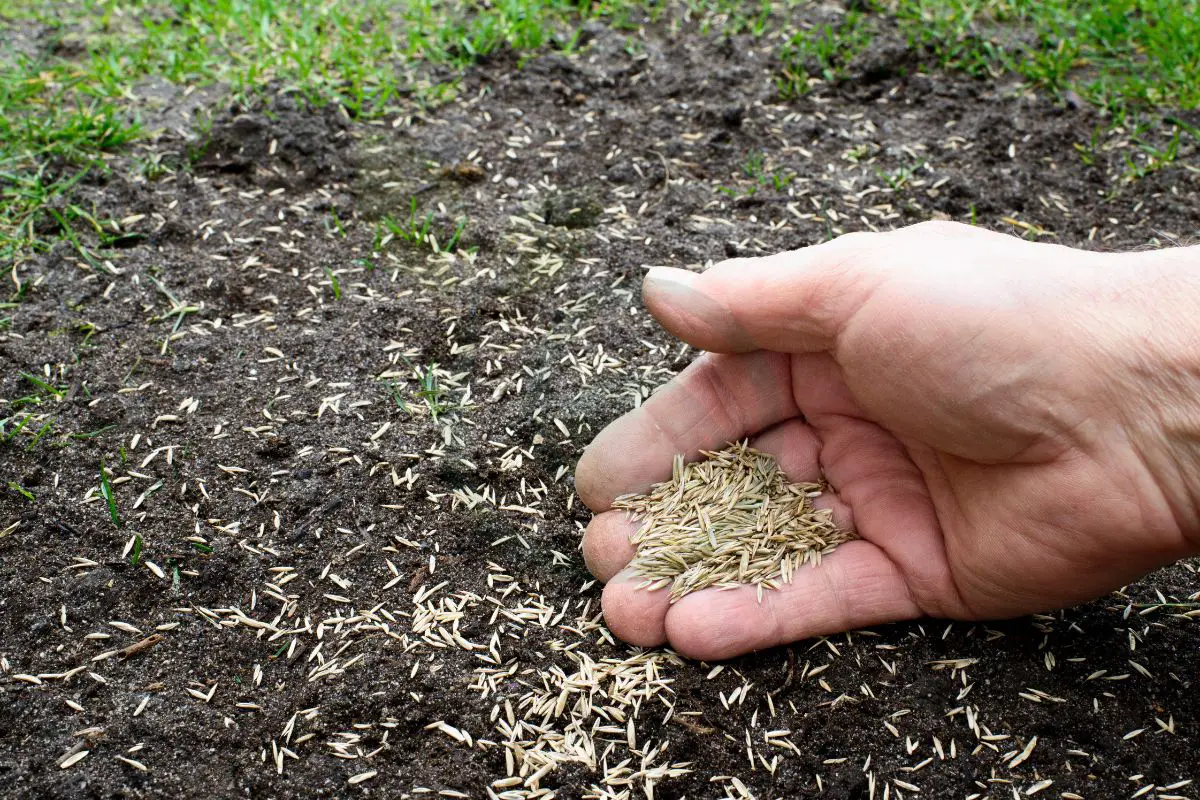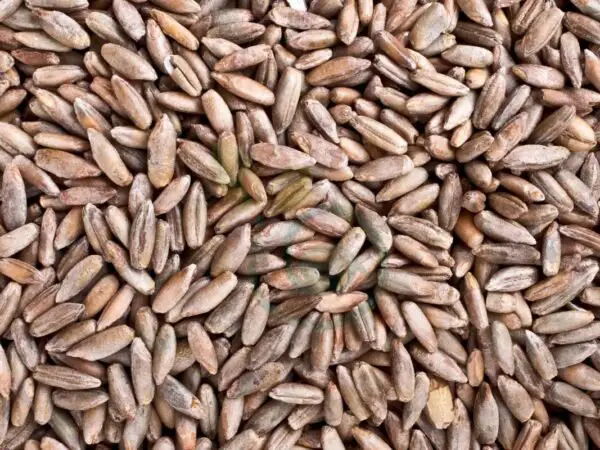Wondering if it's okay to sow grass seed in November? While spring and fall are prime times for seeding, November can still work, depending on your location and grass type. Understanding the historical context of planting seasons can shed light on the possibilities. The key lies in favorable soil temperatures and moisture levels for successful germination. Stay tuned as we explore the ins and outs of planting grass seed in November in freezing temperatures.
Key Takeaways
- Timing Matters: Seeding in November can be successful if done correctly, taking advantage of the cooler temperatures and increased moisture.
- Dormant Seeding Benefits: Understand the concept of dormant seeding to utilize the winter months for grass seed establishment.
- Choose Wisely: Select grass seed varieties that are suitable for late-season planting and your specific soil and climate conditions.
- Prep for Success: Properly prepare the soil by clearing debris, loosening the top layer, and ensuring good seed-to-soil contact.
- Technique is Key: Employ effective sowing techniques such as overseeding, slit seeding, or hydroseeding for optimal results.
- Consistent Care: Maintain adequate watering and care post-seeding to support germination and early growth.
November Seeding Basics
Benefits
Planting grass seed in November offers unique advantages. The cooler temperatures provide an ideal environment for seed germination. This results in healthier and more resilient grass that can withstand various weather conditions. Seeding in November can lead to significant cost savings as prices for grass seed may be lower during this off-peak season.
Drawbacks
There are some challenges associated with seeding grass in November. Colder temperatures during this time of year can lead to lower germination rates, prolonging the time it takes for the grass to establish fully. Moreover, increased maintenance is often required for grass seeded in November due to the slower growth rate and susceptibility to frost damage.
Ideal Conditions
Successful grass seeding in November relies on optimal environmental conditions. It is crucial to ensure that the soil temperature remains above freezing to support seed germination. Adequate moisture levels are also essential for the seeds to sprout and grow effectively during this period. Ideally, mild weather conditions with occasional rainfall provide the perfect setting for successful seeding efforts.
Understanding Dormant Seeding
Process Explained
Seeding grass in November involves crucial steps to ensure successful growth. First, prepare the soil by removing debris and weeds to create a clean surface for seeding. Next, loosen the soil using a rake or tiller to promote seed-to-soil contact, aiding germination. Lastly, spread the grass seed evenly using a broadcast spreader for uniform coverage.
Best Time
The optimal time within November for grass seeding is early to mid-November. Factors influencing timing include temperature and moisture levels, ensuring ideal conditions for seed germination. Choosing the right date is vital as it impacts seed establishment and overall lawn health.
Spring Expectations
After seeding in November, expect lush green grass in spring due to early root establishment. Moreover, early seeding leads to thicker turf with better weed resistance, enhancing overall lawn appearance. However, challenges like late frosts may affect young grass, requiring protective measures like covering plants during frosty nights.
Selecting Grass Seed
Optimal Selection
To ensure success when selecting grass seed for November planting, consider factors like germination rate and disease resistance. Look for varieties suitable for cooler temperatures and quick establishment. Opt for high-quality grass seed to promote healthy growth and lush lawns.
When choosing grass seeds for late-season planting, opt for cool-season varieties such as fescue or ryegrass. These types are resilient to cold weather conditions and can establish well before winter sets in. Prioritize seeds with a high germination rate to expedite the growth process.
Ideal Types
For seeding in November, focus on grass types like Kentucky bluegrass or fine fescue that thrive in cooler climates. These varieties exhibit strong root development even during the fall season, ensuring better survival through winter months. Consider mixes that combine different grass types for added resilience.
The ideal grasses for late fall seeding are those that have a higher tolerance to cold temperatures and frost. Look for characteristics like deep root systems and quick establishment to withstand harsh winter conditions effectively. Opting for blends of multiple species can enhance lawn durability.
Last Season's Choices
Reflect on the grass seed selections made last season to evaluate their impact on the current lawn condition. Assess how well the chosen varieties adapted to environmental factors and seasonal changes throughout the year. Learn from any challenges faced during previous seeding attempts.
Analyzing past seeding decisions helps in understanding which grass types perform best in specific conditions, leading to more informed choices moving forward. By reflecting on previous experiences, you can refine your approach towards selecting suitable grass seed varieties each season.
Preparing the Soil
Ensuring Contact
To achieve successful grass growth in November, it is crucial to ensure good seed-to-soil contact. This contact promotes ideal conditions for germination by allowing the seeds to absorb moisture and nutrients. Techniques such as raking the soil surface gently can improve this contact, aiding in the establishment of strong roots.
Creating an optimal environment for seed germination involves pressing the seeds lightly into the soil or using a lawn roller after sowing. These techniques help eliminate air pockets that hinder seed growth. Adequate seed-to-soil contact not only boosts germination rates but also supports healthy root development, leading to lush green yards.
Soil Conditions
The success of grass seeding in November heavily relies on favorable soil conditions. Soil pH levels influence nutrient availability, impacting how well grass seeds sprout and grow. Testing the soil before planting helps determine if any amendments are necessary to create an ideal pH balance for optimal growth. Nutrient-rich soil provides essential elements that support robust root development and overall plant health.
Prioritizing soil testing allows you to address any deficiencies before seeding your yard in late fall. Nutrients like nitrogen, phosphorus, and potassium play vital roles in promoting healthy grass growth during this period. By ensuring your soil is rich in these nutrients, you set a solid foundation for vibrant grass that thrives even as winter approaches.
Sowing Techniques
Step-by-Step Guide
To plant grass seed in November, begin by raking the soil to remove debris and create a smooth surface. Next, spread the seeds evenly across the seeded area using a broadcast spreader. Lightly rake the seeds into the soil at a depth of about 1/4 inch.
For optimal growth, water the seeded areas immediately after planting to ensure moisture penetrates the soil. Throughout November, continue watering lightly each day to keep the soil moist but not soggy. Avoid heavy watering that may wash away seeds or lead to waterlogging.
After seeding, apply a layer of mulch over the seeded area to retain moisture and protect against erosion. Monitor the growth progress regularly and make adjustments as needed based on weather conditions and seed germination rates.
Proper Watering
Proper watering is crucial for successful grass seed germination in November. Ensure consistent moisture in the soil by watering lightly daily until grass begins to establish roots. Overwatering can lead to fungal diseases while underwatering results in poor germination.
In November, adjust your watering schedule based on weather conditions; if it rains frequently, reduce manual watering accordingly. Check soil moisture levels by inserting your finger into the ground – if it feels dry, it's time to water again. Consistent monitoring is key for healthy grass growth.
Avoid creating puddles or waterlogged spots by adjusting your watering technique as needed throughout November. By maintaining proper hydration levels for newly seeded grass, you promote strong root development and overall lawn health.
Watering and Care
Techniques Explained
To seed grass in November, consider using techniques like broadcasting or slit-seeding for optimal results. Broadcasting involves spreading seeds evenly by hand, while slit-seeding uses a machine to plant seeds directly into the soil. Each method has its pros and cons.
Broadcasting is simple and cost-effective, but it may result in uneven seed distribution. On the other hand, slit-seeding ensures better seed-to-soil contact, promoting germination. The most effective technique depends on your lawn's size and condition to achieve even grass coverage.
Monitoring Growth
Monitoring grass growth progress after seeding in November is crucial for successful establishment. Look for signs of healthy growth such as vibrant green color, uniform thickness, and absence of bare patches. However, be vigilant for potential issues like patchy germination or fungal diseases that can hinder growth.
To track and evaluate newly seeded grass effectively, establish a routine inspection schedule. Regularly observe the lawn for any changes in color or density. Keep an eye out for signs of stress such as wilting or discoloration, which may indicate inadequate watering or nutrient deficiencies.
Overcoming Challenges
Pest Management
Grass seeded in November may face pests and diseases like cutworms, grubs, and fungal infections. These can hinder seed germination and young plant growth. To prevent these issues, maintain proper lawn hygiene by removing debris regularly.
Early detection is crucial for tackling pest infestations effectively. Keep an eye out for signs of pest damage such as chewed grass blades or wilting plants. Implement natural remedies like neem oil or introduce beneficial insects to control pests organically.
Prompt action against pests is essential to protect the newly seeded grass. Utilize environmentally friendly pesticides only when necessary to avoid harming beneficial insects in your lawn ecosystem.
Weather Factors
The success of grass seed germination in November heavily relies on weather conditions. Optimal temperature ranges between 50-65°F support healthy seedling growth during this period.
Adequate precipitation is vital for keeping the soil moist without causing waterlogging, promoting germination and root development. Ensure the newly seeded area receives sufficient water based on the specific requirements of the grass species you've planted.
Sunlight plays a crucial role in photosynthesis and overall plant health. Positioning your lawn in areas with good sunlight exposure encourages robust growth and minimizes issues like leggy or weak seedlings.
To manage weather-related challenges during November seeding, consider using protective covers or mulch to retain soil moisture and regulate temperature fluctuations around the seeds.
Expectations for Spring
Germination Success
Proper soil preparation is crucial for successful grass seed germination in November. Adequate watering promotes healthy growth. Maximize germination success by ensuring the soil is well-drained and free of debris that may hinder growth. Late fall planting requires consistent moisture levels to support seed germination, especially during dry periods.
Maintenance Tips
After seeding in November, avoid mowing until the grass reaches at least 3 inches in height to prevent damage. Fertilize newly seeded areas lightly with a phosphorus-rich fertilizer to encourage root development post-planting. Weed control is essential to prevent competition for nutrients and sunlight, particularly in the early stages of growth. Regular watering and monitoring are vital for establishing a healthy lawn from grass seeds planted in November.
Additional Tips for Success
Fertilization Strategies
Grass seeded in November requires careful fertilization to thrive during the colder months and emerge beautifully in spring. Select a high-phosphorus fertilizer to encourage strong root development, aiding the grass in establishing itself before winter sets in. The timing of fertilization is crucial, with late fall being ideal for applying fertilizer to support initial growth before dormancy.
Proper fertilization plays a vital role in nourishing newly seeded grass, providing essential nutrients for healthy growth. Consider using a slow-release fertilizer to ensure a steady supply of nutrients over an extended period. This approach helps sustain grass health through the winter months, setting the foundation for lush greenery when spring arrives.
Aeration Benefits
Aerating the soil before seeding grass in November offers numerous benefits that directly impact the success of your lawn. By aerating, you enhance soil structure, allowing air, water, and nutrients to penetrate deeply into the ground. This process creates optimal conditions for seed germination by promoting better seed-to-soil contact.
The benefits of aeration extend beyond improved soil structure; it also enhances overall lawn health by reducing compaction and promoting robust root growth. With increased oxygen circulation and nutrient absorption capabilities, aerated soil provides an ideal environment for new grass seeds to establish themselves effectively.
Summary
In November, you can successfully sow grass seed if you follow the right steps. Understanding dormant seeding, selecting suitable grass seed, preparing the soil adequately, utilizing proper sowing techniques, and ensuring consistent watering and care are crucial. Overcoming challenges and setting realistic expectations for spring growth will help you achieve a lush lawn. Implementing the extra tips shared can further enhance your seeding process.
Frequently Asked Questions
Can I sow grass seed in November?
Yes, you can sow grass seed in November. It's known as dormant seeding, where the seeds lie dormant until spring. This method helps the seeds germinate once conditions are right, giving your lawn a head start when spring arrives.
What type of grass seed should I use for November seeding?
For November seeding, choose cool-season grass varieties like fescue or ryegrass. These types are better suited to germinate in cooler temperatures and will establish well during the winter months for a lush lawn come spring.
How should I prepare the soil before sowing grass seed in November?
Prepare the soil by raking it to remove debris and loosen the top layer. This helps improve seed-to-soil contact for better germination. Consider adding organic matter like compost to enrich the soil and provide essential nutrients for healthy growth.
Do I need to water my newly seeded lawn if I sow grass seed in November?
While watering requirements may be lower due to cooler temperatures, it's crucial to keep the soil consistently moist after sowing grass seed in November. Water lightly but frequently to ensure proper hydration for germination without causing waterlogging.
What challenges should I anticipate when seeding grass in November?
Challenges such as inconsistent weather conditions, frost, or wildlife feeding on seeds may arise when seeding grass in November. To mitigate these issues, monitor weather forecasts closely, protect newly seeded areas from wildlife with barriers if needed, and be prepared to adjust your care routine accordingly.
Image Source: Paid image from CANVA




